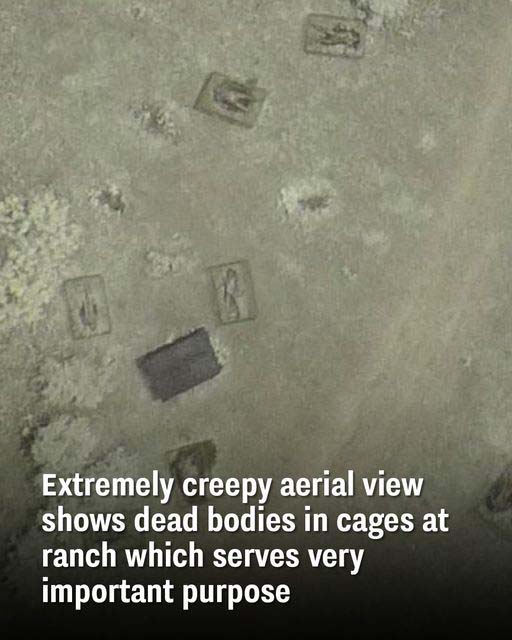Strange aerial shots circulating online have sparked curiosity and concern, as they reveal dead bodies confined in cages at a mysterious ranch. But despite the unsettling imagery, the truth behind these images takes us to the heart of the Forensic Anthropology Research Facility (FARF) at Texas State University. This 26-acre outdoor laboratory, the largest of its kind, plays a crucial role in advancing forensic anthropology, studying and hopefully unraveling the mysteries of human decomposition, and contributing to law enforcement knowledge.1
The Purpose of Studying Dead Bodies:
Contrary to initial impressions, FARF is a vital resource for forensic anthropology students, researchers, and law enforcement agencies nationally and internationally. Established in 2008, the facility conducts research on dead bodies under a number of different climatic conditions, aiming to answer questions related to the time of death and postmortem interval (time since death).2
The ranch houses around 50 bodies, with some placed in cages to study bacterial decomposition. Other bodies, however, are left exposed to the elements, allowing researchers to observe the effects of scavenging simultaneously. In collaboration with anthropology students, law enforcement officials, and other researchers, these efforts have contributed significantly to understanding human decay.

The ranch is not just a research facility but also a unique educational platform. Students from Texas State University actively engage in studying dead bodies, providing them with hands-on experience in forensic anthropology. This extremely helpful but unconventional learning environment gives the most hands-on understanding of human decay and aids in developing forensic skills.
One surprising aspect of FARF is its role as a cost-effective alternative to traditional funerary and burial practices. The individuals who become part of the research efforts are there by their own or their families’ specific wishes. This advances scientific knowledge and provides an ethical and economical option for those who donate their bodies for research purposes. But don’t worry, checking off “donate my dead body to science” isn’t a one-way ticket to having your body lying in the Texas sun.
Building a Legacy: The Texas State Dead Body Collection:
Daniel Wescott, the director of FARF, sheds light on the facility’s primary objective: “What we really want to figure out is, at a basic level, how decomposition works. There’s a whole little ecosystem going on right here. And we want to understand every part of it”.
Besides its research contributions, FARF serves as a training ground for forensic anthropology students, law enforcement personnel, and medicolegal professionals. The facility imparts essential skills for searching and recovering the remains of dead bodies in a medico-legal context.
The research conducted at FARF extends beyond the initial decomposition phase. The skeletal elements of the donors are collected, cleaned, and permanently curated into the Texas State Donated Skeletal Collection (TXSTDSC). This collection serves as a long-term resource for scientific research and education.3
While the aerial views of dead bodies in cages may initially raise alarm, looking deeper into the story behind these images reveals a facility dedicated to advancing forensic anthropology, unraveling the mysteries of human decay, and providing a unique educational experience for students. The Forensic Anthropology Research Facility at Texas State University stands as a testament to the intersection of science, education, and ethical considerations in the pursuit of knowledge.
